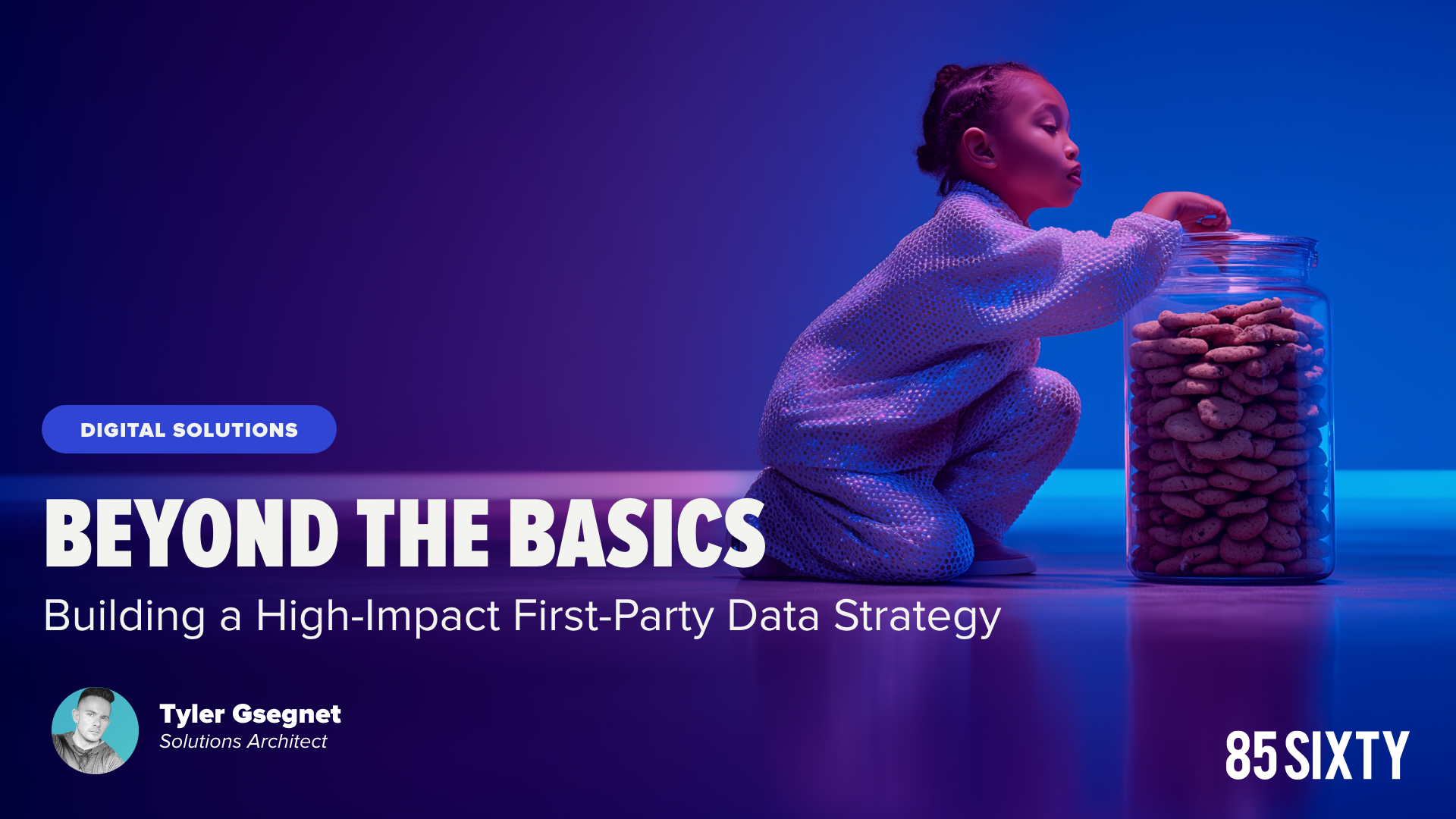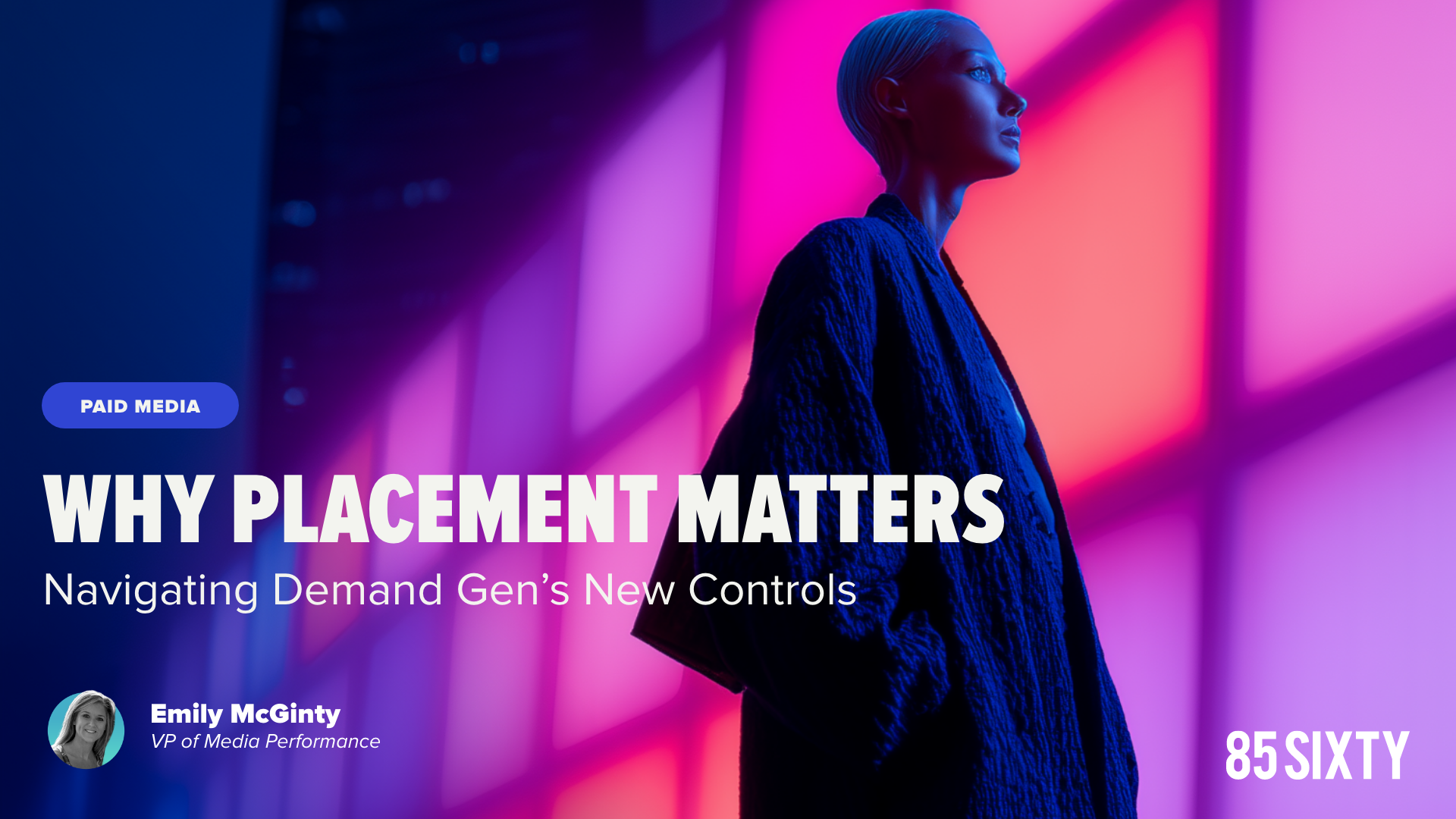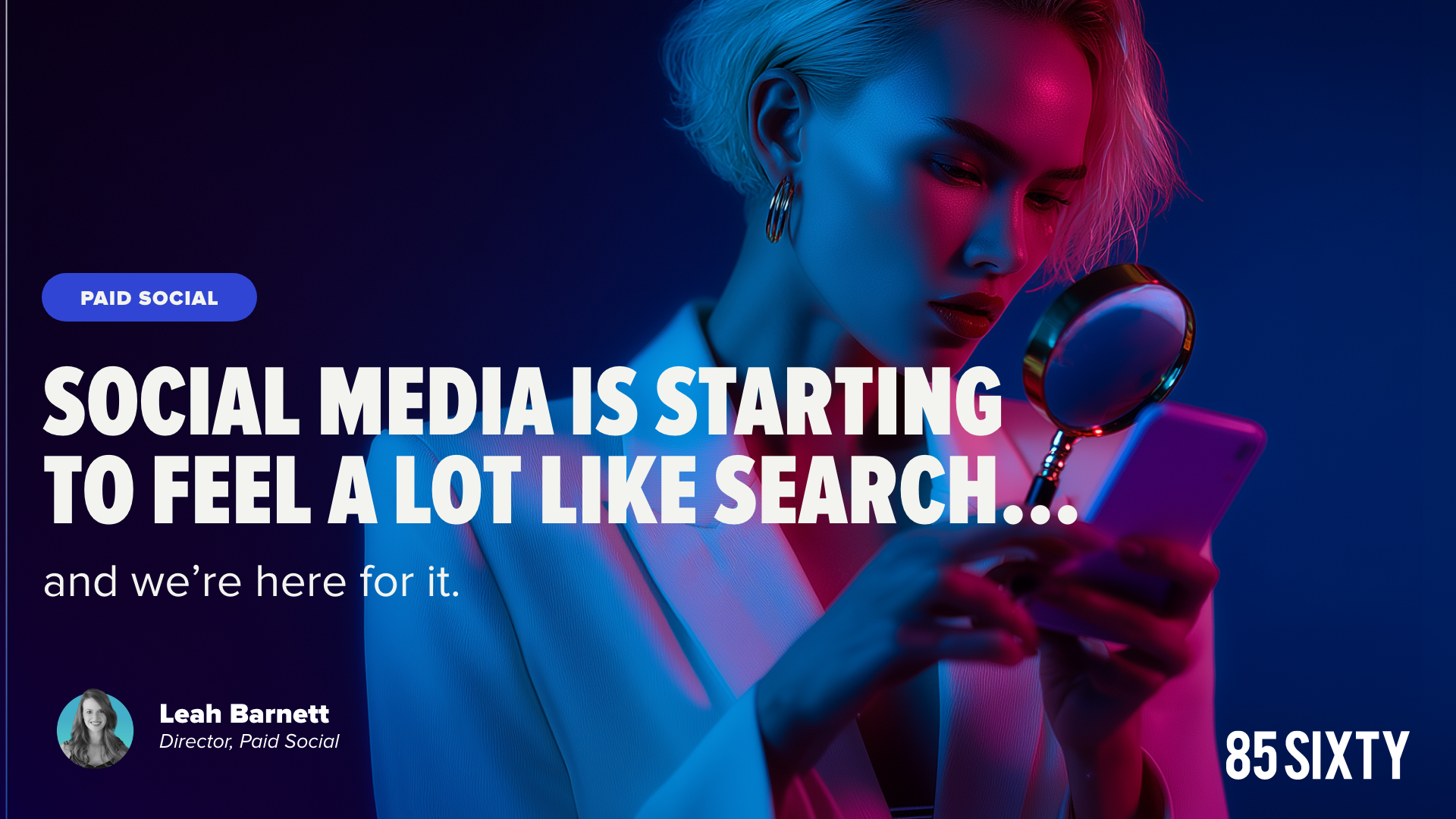
Beyond the Basics: Building a High-Impact First-Party Data Strategy
Why First-Party Data Is Having a Moment
The way marketers access and use customer data is being rewritten. Google is moving forward with somewhat chaotic third-party cookie deprecation methods, Apple’s App Tracking Transparency has cut off key mobile signals, and global privacy laws like GDPR and CPRA have changed the rules entirely.
On top of that, walled gardens such as Meta, Google, and Amazon are tightening control over what data leaves their platforms, making it harder to track and measure performance across channels.
In this environment, first-party data, information you collect directly from your customers with consent has shifted from a “nice to have” to the foundation of sustainable marketing.
The opportunity is clear. But the difference between having first-party data and using it well is where most brands fall short. The rest of this post will show you how to bridge that gap.
Start With a Use Case — Not Just Collection
Too many 1PD strategies begin with “What can we collect?” instead of “What are we trying to achieve?”
If your goal is retention, you don’t need every scrap of data, you need the behavioral, transactional, and engagement signals that indicate who’s likely to churn. If your goal is acquisition efficiency, you need the data points that help model your highest-value customers for prospecting.
- Pro Tip
Write down three business outcomes you want to influence, then list only the data points required to make each possible. Anything that doesn’t connect? Don’t collect it.
Purpose-driven collection keeps your strategy lean, activation-ready, and focused on results.
Design for Data Quality, Not Just Quantity
Think of your data like ingredients in a recipe. The fresher and more consistent they are, the better the outcome. Piling in more ingredients doesn’t improve the dish, it often ruins it.
High-quality data starts with:
- Clear naming conventions so your teams and platforms speak the same language
- A scalable schema designed for downstream activation, not just storage
- Collection strategies that anticipate compliance requirements and future AI use cases
This is also where future planning matters. As AI and machine learning become more embedded in marketing workflows, having clean, labeled, and reliable data will be a competitive advantage. Poor data hygiene today can block advanced use cases tomorrow.
The cleaner your data, the faster you can activate it, the easier it is to trust, and the more future-proof it becomes.
CDPs – The Engine Behind Activation
A large travel brand once had excellent data, but it lived in six different systems. Marketing wanted to run personalized offers in near real time. Without a CDP, that was impossible.
After implementing a Customer Data Platform, they could unify customer profiles, resolve identities, and push audiences into paid media and email platforms instantly. Within one quarter, they cut audience build time from two weeks to two hours and saw a double-digit lift in campaign engagement.
This is what a CDP does:
- Brings your data together
- Applies identity rules and consent management
- Delivers audiences in real time
- Powers advanced use cases like suppression, cross-channel orchestration, and personalization
Without it, first-party data sits idle. With it, your strategy moves at market speed.
Identity Resolution – Foundation, Not Feature
Once your first-party data is clean, structured, and unified, the real magic happens: turning that data into intelligence.
- Why can’t we just use the data as it comes in?
A: Because without identity resolution, you don’t actually know who you’re talking to across touchpoints.
- What does identity resolution do?
A: It links behaviors, purchases, and interactions across devices, channels, and time into a single, persistent profile.
- What’s the payoff?
A: Consistent customer journeys, accurate attribution, and better personalization.
- Where does it live?
A: Often within a CDP, but it also requires clean inputs, clear matching rules, and ongoing governance to keep accuracy high.
Identity resolution isn’t just a feature, it’s the backbone of your customer understanding.
Smarter Segmentation & Predictive Modeling
Segmentation is where strategy becomes tangible. Instead of broad groups like “recent purchasers,” advanced segmentation lets you define audiences based on behaviors, transactions, lifecycle stage, or engagement level.
Layer predictive modeling on top and you shift from reacting to anticipating. Imagine being able to see which customers are most likely to convert, which are at risk of churning, or which prospects most closely match your best customers.
For a ski resort client, this meant moving from generic “pass holder” audiences to models that identified likely renewals, at-risk members, and high-potential prospects — each with tailored campaigns. The result? Lower acquisition costs and higher retention.
This is the point where first-party data stops being a list of names and becomes a growth engine.
Privacy & Compliance by Design
You can’t bolt on privacy at the end. It must be embedded from the start.
That means:
- Managing consent through a robust CMP
- Applying region-specific rules (GDPR vs. CPRA)
For example, GDPR in the EU demands opt-in by default, while CPRA in California requires clear opt-out mechanisms.
- Choosing tracking methods (server-side or client-side) based on control and compliance needs
- Using clean rooms for privacy-safe data collaboration
When privacy is baked in, you future-proof your strategy against both regulatory change and customer trust erosion. A good foundation will allow you to be resilient to whatever comes next.
Activation & Measurement – Close the Loop
Collecting and structuring data is only half the job. The other half is getting it into the market and knowing if it worked.
Activation means pushing your audiences into the channels that matter: ad platforms, email, personalization engines, loyalty systems. Measurement means tying every campaign back to the original business goal.
Ask yourself:
- If this audience is meant to reduce churn, can I see renewal rates?
- If this is for acquisition efficiency, am I tracking both CPA and ROAS?
When activation and measurement work together, your 1PD strategy becomes a living system that learns and improves with every cycle.
What Success Looks Like
Success is visible. You might see:
- A lift in ROAS from modeled audiences
- Match rates that climb and stay high
- Reduced spend on third-party data without performance loss
A retail brand might save millions by suppressing repeat purchasers from prospecting campaigns. A travel company could use predictive scoring to focus spend only on the most likely bookers.
The outcome is more than just a few strong campaigns. It’s a repeatable, scalable system that turns customer data into business results. When you reach that point, you’re not just running marketing programs, you’re running a data-driven growth engine.
Final Thought – It’s Not a Stack, It’s a Strategy
Your tools don’t create strategy. They enable it.
First-party data is a living asset, and making it work requires alignment between marketing, technology, data, and compliance teams. It’s part architecture, part governance, and part creativity. The brands that win are the ones that treat data as a core business function, not a side project. They invest in the people and processes that turn data into action.
If you’re ready to build a first-party data strategy that actually performs, start with the strategy and let the stack follow.



Leave a comment:
You must be logged in to post a comment.